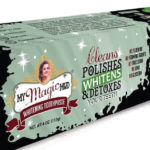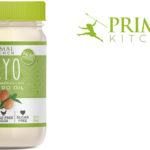ORAC Values: Are They Useful?

(DetoxifySamurai) What are ORAC values and can a numerical ranking system help direct us to foods which may be more beneficial in achieving our health objectives than others?
The ORAC (Oxygen Radical Absorbance Capacity) unit, ORAC value, or “ORAC score” is a method of measuring the antioxidant capacity of different foods and supplements. It was developed by scientists at the National Institutes of Health (NIH). While the exact relationship between the ORAC value of a food and its health benefit has not been established, it is believed that foods higher on the ORAC scale will more effectively neutralize free radicals. According to the free-radical theory of aging, this will slow the oxidative processes and free radical damage that can contribute to age-related degeneration and disease.
A study in the Nutrition Journal from 2010 titled ‘The total antioxidant content of more than 3,100 foods, beverages, spices, herbs and supplements used worldwide’ provides a comprehensive study of ORAC values within several categories and the opinion that “A plant-based diet protects against chronic oxidative stress-related diseases.” A strong endorsement regarding the plant-based diet from its 16 authors from such institutions as Institute of Basic Medical Sciences, Norway; Harvard School of Public Health; Department of Cell Biology and Morphology, Akita University Graduate School of Medicine, Japan; and others. They way those plants protect against oxidative-stress is still being researched. The authors continue by saying “It has been hypothesized that plant antioxidants may contribute to the beneficial health effects of dietary plants.”
The 3,100 foods were placed in one of 24 categories and then measured for their ORAC values. You can see the full results here.
For your convenience I have summarized the top three for each category and their ORAC values.
- Berries and berry products
- Alma berries, dried: 261.53
- Dog Rose, dried, whole: 78.09
- Dog Roseshell, flour: 75.84
- Beverages
- Tea, green, (pink) poweder: 1,347.83
- Tea, instant, dry poweder, unsweetened: 165.86
- Tea, Sermoni, powder: 155.42
- Breakfast Cereals
- Complete, Kellogg’s: 4.84
- Bran Flakes, Ralston: 4.29
- Whole Grain Total, General Mills: 3.41
- Chocolate and sweets
- Chocolate, chocolate discs, 70% cocoa: 14.98
- Chocolate, dark chocolate, Colombian coffee bits, 70% cocoa: 14.79
- Chocolate, dark chocolate, Columbia single origin with cacao nibs, 70% cocoa: 14.47
- Dairy and dairy products
- Cheese, brown goat cheese, Tine, Norway: 0.78
- Ice cream, chocolate, regular fat, Edy’s/Dryer’s: .076
- Ice cream, chocolate, regular fat, grand chocolate flavor, Edy’s/Dryer’s: 0.71
- Desserts and cakes
- Pudding mix, chocolate, sugar free, cook & serve, Jell-O: 4.10
- Pudding mix, chocolate, sugar‐free, fat‐free instant: Jell-O: 2.74
- Pudding mix, chocolate, cook & serve, Jell-O: 2.24
- Egg
- Egg, yolk, Prior, Norway: 0.16
- Egg, scrambled, with milk, Prior, Norway: 0.08
- Egg, whole, Prior, Norway: 0.06
- Fats and oils
- Margarine, Per, A/S Margarinfabrikken, Norway: 1.66
- Margarine, Soya, A/S Margarinfabrikken, Norway: 1.53
- Margarine, Melange, Mills, Norway: 1.50
- Fish and seafood
- Kapenta, dried, Wopanada McHere, Malawi: 0.65
- Prawns, peeled, cooked, Reinhartsen Seafood, Denmark: 0.24
- Tuna, canned, in oil, Diva: 0.21
- Fruit and fruit juices
- Pomegranate, only yellow pith, Spain: 55.52
- Fruit from the African Baobab tree, Malawi: 10.84
- Pomegranate, arils and carpellar membrane: 9.05
- Grains and grain products
- Autumn wheat, Bastian, Norwegian University of Life Sciences: 3.24
- Bread, with fibre/wholemeal, with walnuts, Åpent bakeri, Norway: 3.11
- Colosseo (durum), Norwegian University of Life Sciences: 2.59
- Herbal / traditional plant medicine
- Sangre de grado (Croton lechleri), liquid solution, Iquitos, Peru: 2,897.11
- Triphala, powder in capsule, The Himalaya Herbal Health Care: 706.25
- Amalaki (Amla), powder in capsule, The Himalaya Herbal Health Care: 301.14
- Infant foods and beverages
- Dog Rose Extract, Weiders Farmasøytiske A/S, Norway: 18.52
- Dog Rosepurée, Nestlé, Norway: 6.68
- Peaches, Heinz: 1.25
- Legumes
- Broad beans, green: 1.97
- Berlotti beans, McKenzies’s: 1.96
- Broad beans, split, Toko‐sun, Netherlands: 1.64
- Meat and meat products
- Bacon, fried, Spis, Norway: 0.85
- Liver, ox, frozen: 0.71
- Hot dog, barbecue, fried, Glide, Norway: 0.59
- Miscellaneous ingredients
- Sugar colour, Negro, Toro, Norway: 15.54
- Molasses, dark, Brer Raddit: 4.90
- Barley malt syrup, organic, Sweet Cloud: 2.12
- Mixed food entrees
- Chili with meat, no beans, canned, Wolf: 0.49
- Chili with meat and beans, canned (thick), Nalley: 0.48
- Lasagna with meat, regular, frozen, Stouffer’s: 0.48
- Nuts and seeds
- Walnuts, with pellicle (purchased with shell): 33.29
- Pecans, with pellicle, San Lázara: 10.62
- Pistachios, India: 4.98
- Poultry and poultry products
- Chicken Liver, frozen, Prior, Norway: 1.00
- Turkey hot dogs (barbecue), Prior, Norway: 0.76
- Snacks
- Toasty peanut butter filled crackers, Little Debbie: 1.17
- Pretzels, Frito Lay Rold Gold: 1.10
- Cheese crackers with peanut butter filling, Little Debbie: 0.95
- Soups, sauces, dressings and salsa
- Pesto, basil, Italian, ICA, Sweden: 4.36
- Sauce, taco, hot, Landlord, : 4.25
- Sauce, wrap, medium spiced, Casa Fiesta: 3.70
- Spices and herbs
- Clove, dried ground,Black Boy, Rieber og søn: 465.32
- Meadowsweet (Filipendulaulmaria), flower, dried, Norsk Øko‐Urt AB, Norway: 167.82
- Wild marjoram, leaves, dried, The Norwegian Crop Research Institute, Norway: 142.86
- Vegetables
- Leaves from the African Baobab tree, dry, crushed, Mali: 48.07
- Moringa Stenopetala, dried leaves and stem, Ethiopia: 11.90
- Artichoke, canned, Mario’s Spain: 4.76
- Vitamin and dietary supplements
- CVS Vitamin C (as ascorbic acid), 500 mg, CVS: 1,019.69
- Antocyanin ascorbates, Aronia, Polyphenols Laboratories AS: 725.35
- Z‐BEC, Inverness Medical: 701.93
The study’s conclusion was that “plant-based foods introduce significantly more antioxidants into human diet than non-plant foods.” and that “It is widely accepted that a plant-based diet with high intake of fruits, vegetables, and other nutrient-rich plant foods may reduce the risk of oxidative stress-related diseases”. In addition, they hypothesized that that antioxidants originating from foods may bring about beneficial health effects through other mechanisms, including acting as inducers of mechanisms related to antioxidant defense, longevity, cell maintenance and DNA repair.
While the authors are enthusiastic about antioxidents the USDA has changed direction and no longer finds this type of measure as useful enough to even continue publishing.
The United States Department of Agriculture (USDA), Agricultural Research Service, has the following to say about ORAC values.
In 2012 USDA’s Nutrient Data Laboratory (NDL) removed the USDA ORAC Database for Selected Foods from the NDL website due to mounting evidence that the values indicating antioxidant capacity have no relevance to the effects of specific bioactive compounds, including polyphenols on human health.
There are a number of bioactive compounds which are theorized to have a role in preventing or ameliorating various chronic diseases such as cancer, coronary vascular disease, Alzheimer’s, and diabetes. However, the associated metabolic pathways are not completely understood and non-antioxidant mechanisms, still undefined, may be responsible. ORAC values are routinely misused by food and dietary supplement manufacturing companies to promote their products and by consumers to guide their food and dietary supplement choices.
A number of chemical techniques, of which Oxygen Radical Absorbance Capacity (ORAC) is, one, were developed in an attempt to measure the antioxidant capacity of foods. The ORAC assay measures the degree of inhibition of peroxy-radical-induced oxidation by the compounds of interest in a chemical milieu. It measures the value as Trolox equivalents and includes both inhibition time and the extent of inhibition of oxidation. Some newer versions of the ORAC assay use other substrates and results among the various ORAC assays are not comparable. In addition to the ORAC assay, other measures of antioxidant capacity include ferric ion reducing antioxidant power (FRAP) and trolox equivalence antioxidant capacity (TEAC) assays. These assays are based on discrete underlying mechanisms that use different radical or oxidant sources and therefore generate distinct values and cannot be compared directly.
There is no evidence that the beneficial effects of polyphenol-rich foods can be attributed to the antioxidant properties of these foods. The data for antioxidant capacity of foods generated by in vitro (test-tube) methods cannot be extrapolated to in vivo (human) effects and the clinical trials to test benefits of dietary antioxidants have produced mixed results. We know now that antioxidant molecules in food have a wide range of functions, many of which are unrelated to the ability to absorb free radicals.
For these reasons the ORAC table, previously available on this web site has been withdrawn.
In the opinion of the USDA Research Service ORAC scores are of questionable value, so much so, that they were removed from their site.
While ORAC values probably should not be relied on exclusively, they may be useful as one factor in the overall assessment of the health benefits of the foods we eat and high value foods should be considered as part of a well balanced diet.
Sources:
- Nutrition Journal
- US Department of Agriculture






